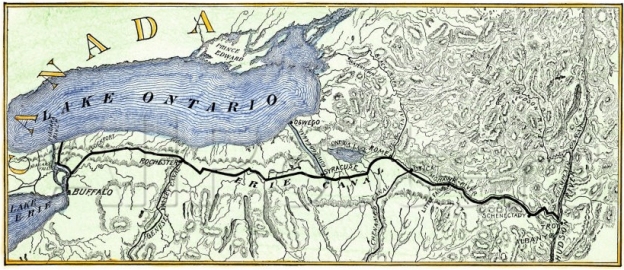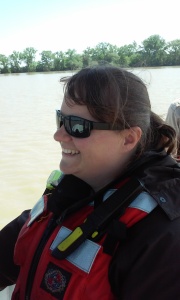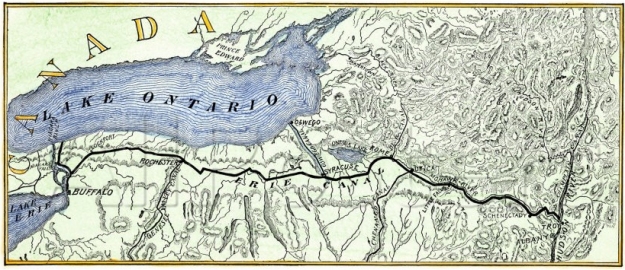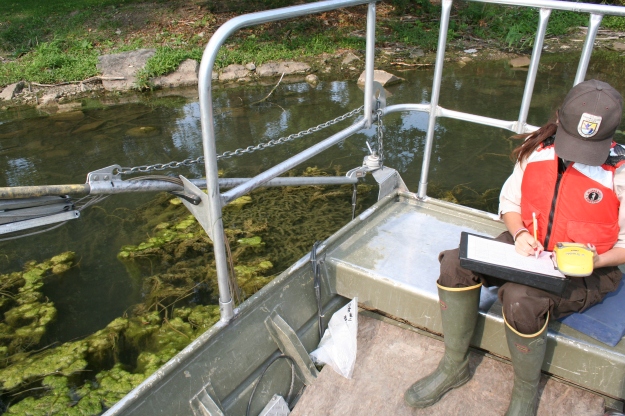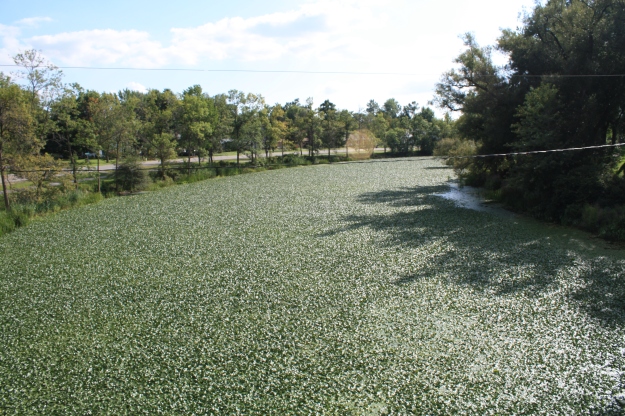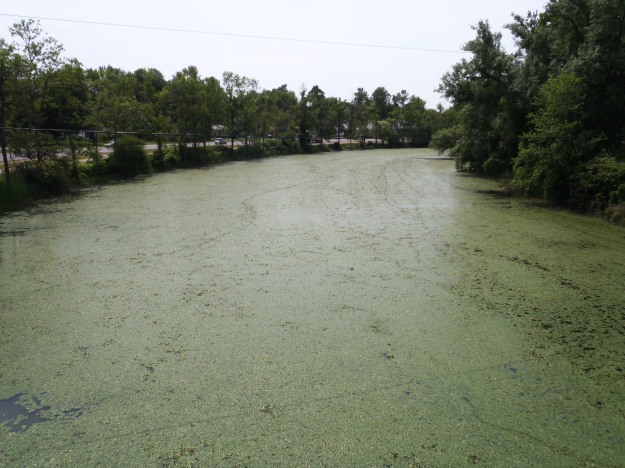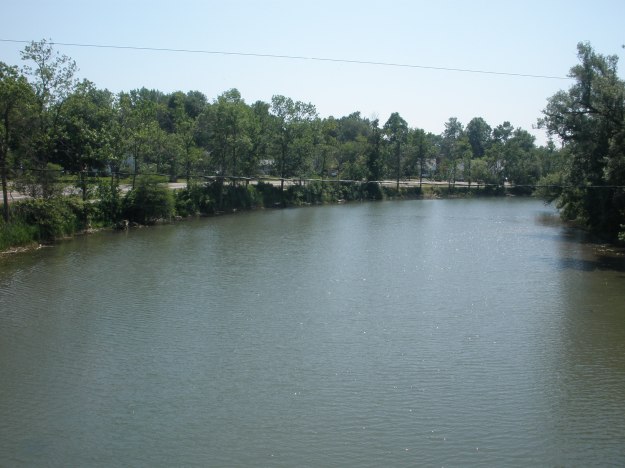Today we’re sharing a story written by reporter Karen Blackledge of The Danville News from Pennsylvania’s Central Susquehanna Valley. The news story features our efforts to assist private landowners in restoring homes for wildlife, including the eastern brook trout!

Thanks to habitat restoration, brook trout like this one will soon make their home in Limestone Run, a tributary of the West Branch Susquehanna River. Credit: Jaime Masterson/USFWS
LIMESTONEVILLE — For the first time ever, wild brook trout will soon be swimming in Limestone Run.
They are part of a stream restoration project in the works for about 15 years, said Sean Levan, district manager and bay technician at the Montour County Conservation District.
He and other officials Wednesday showed work done on the farm of Jeff Smith where the state Fish and Boat Commission plans to release about 150 trout Oct. 7. They will range from fingerlings to about 9 inches long.
Dave Keller, a habitat manager, said there is no record of wild brook trout ever being in the stream. “The temperature in the last four years has been conducive to them surviving in the stream,” he said of the only trout native to Pennsylvania which is losing its foothold in habitats in the state.

Logs have been placed alongside and in Limestone Run to improve habit for insects, fish and other life. Photo courtesy of Karen Blackledge, The Danville News.
He said the drought shouldn’t affect introducing them to the stream.
Andy Shiels, director of fisheries for the fish and boat commission, expects multiple releases of fish for several years. They will remove fish from other streams.
Limestone Run, which is considered an impaired stream by the Environmental Protection Agency due to agriculture practices, currently has fish considered bait fish for wild brook trout.
Mark Roberts, of the U.S. Fish and Wildlife Service, said numerous partners, including federal and state agencies, nonprofit organizations, the Montour County Conservation District and universities, worked on the project to create buffer trees to keep cattle out and to install logs around the stream and in the stream.

Mark Roberts of our Pennsylvania field office stands by Limestone Run. Photo courtesy of Karen Blackledge, The Danville News.
Smith was one of the first farmers to work with the groups on creating shade to keep temperatures down in Limestone Run, he said. The logs create deeper pools and places for fish to hide.
Roberts credited the landowners along the run with working with them. “Without them, it would not have been possible,” he said of the voluntary program.
“It’s great to see where this has come,” said Levan who has been part of the project for 11 years.
He said the Chillisquaque-Limestone Watershed Association “got the ball rolling.” Tom Benfer, who taught biology and has a small farm betwen Exchange and White Hall, serves as president.
There is only one farm remaining with animals having access to the run and it is in Northumberland County, he said.
Jason Fellon, watershed manager with the state Department of Environmental Resources, said the the types of insects found in the run shows the quality is improving. The run is now impaired by too much sediment from embankment erosion, he said.
Levan said the work wasn’t expensive with the hemlock logs at $55 each and logs totaling 175 along with 200 tons of rock used. The Fish and Wildlife Service provided equipment with labor done by interns, Fellon said.
LeVan said the project was to improve the stream, from Seven Springs Farm in Montour County and continuing to Milton borough in Northumberland County, began with a biology teacher at Milton High School.
“The biggest thing was talking with landlowners who were willing to work with us,” he said of at least a dozen farmers whose properties are along the stream.
Another important part was working with Milton officials concerning Brown Avenue Park where kids now fish for trout.
“It’s great to see that many people working together,” he said.
Buffers and trees have been planted to keep animals out of the stream. Logs in the stream provide more oxygen and shaded areas.
The partners hope to create an environment for wild trout to reproduce. Next year, they will return to shock the water so the fish come to the surface. They will identify them and count them.
“We will see how they survived the year,” Levan said.
The stream currently is home to warm water fish including suckers, black- and red-nosed daces, shiners and chubs. He said they will be able to live in a now cooler stream and use the structures in place. “They improve the water quality of all fish there,” he said.
Besides landowners, partners in the Limestone Run Watershed include Mike Yeage and Karen Avery of Milton High School, the Chillisquaque/Limestone Watershed Association, DEP Growing Greener, U.S. Fish and Wildlife Service, state Fish and Boat Commission, Renee Carey of the Northcentral PA Conservancy, Montour County Conservation District, Northumberland County Conservation District, Natural Resource Conservation Service, Susquehanna University and Bloomsburg University.
The Limestone Run work is the 10th project since the partnership began seven years ago of the state Department of Envrionmental Protection, fish and boat commission and conservation organizations.
More than 90 projects have been completed along nearly seven miles of agricultually impaired streams in North Central Pennsylvania. They won a Governor’s Award for Environmental Excellence in 2014.
Check out the original story on The Daily Item’s website. You can reach the writer at kblackledge@thedanvillenews.com.

